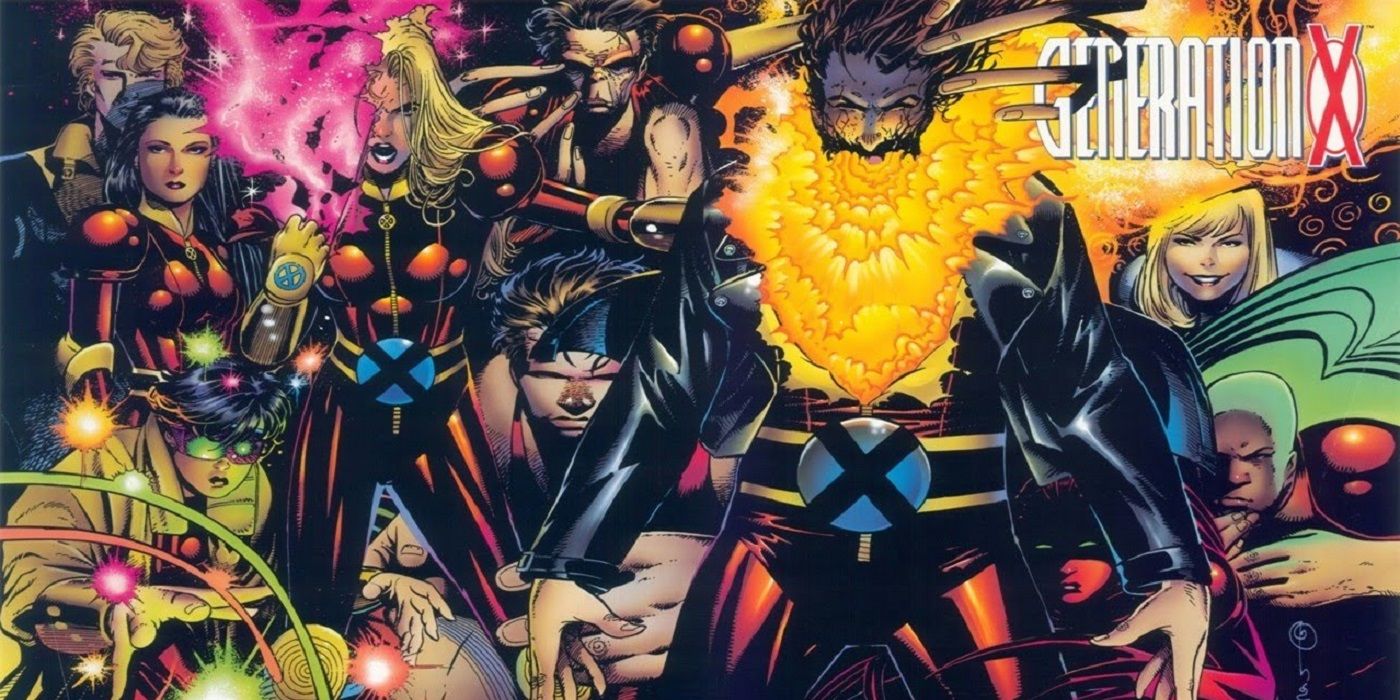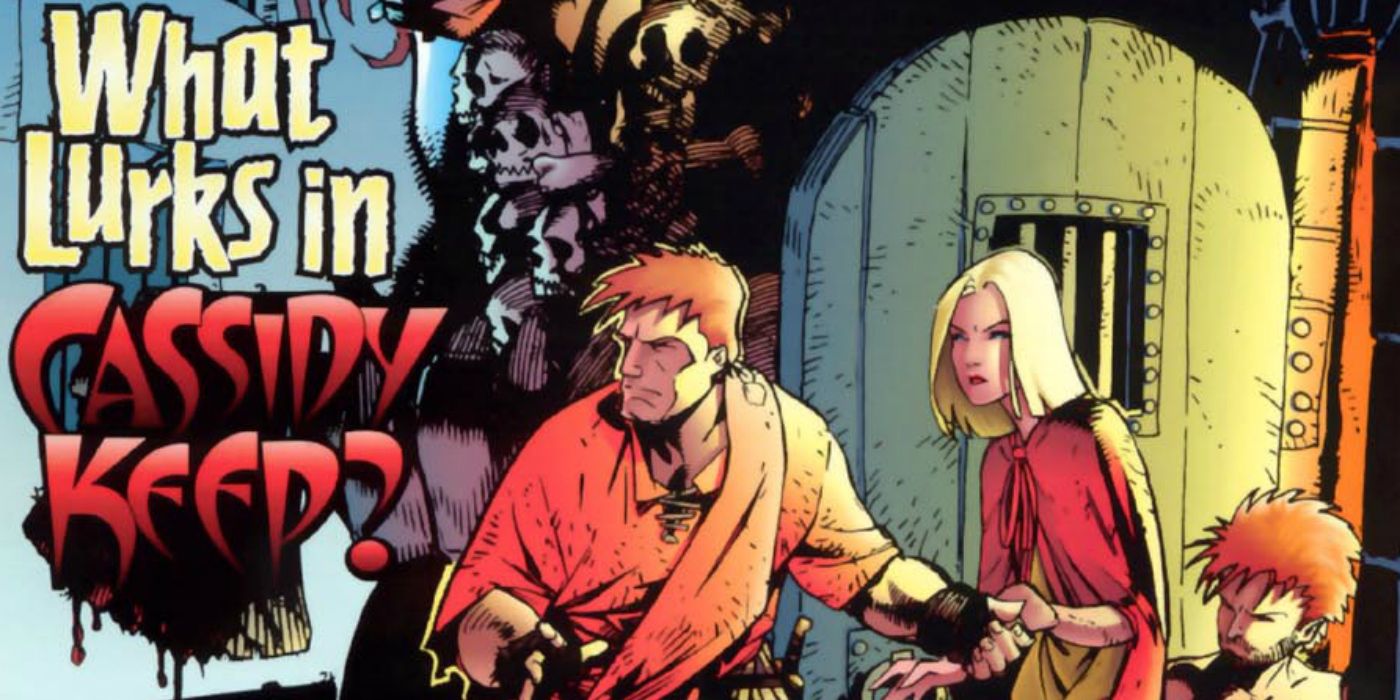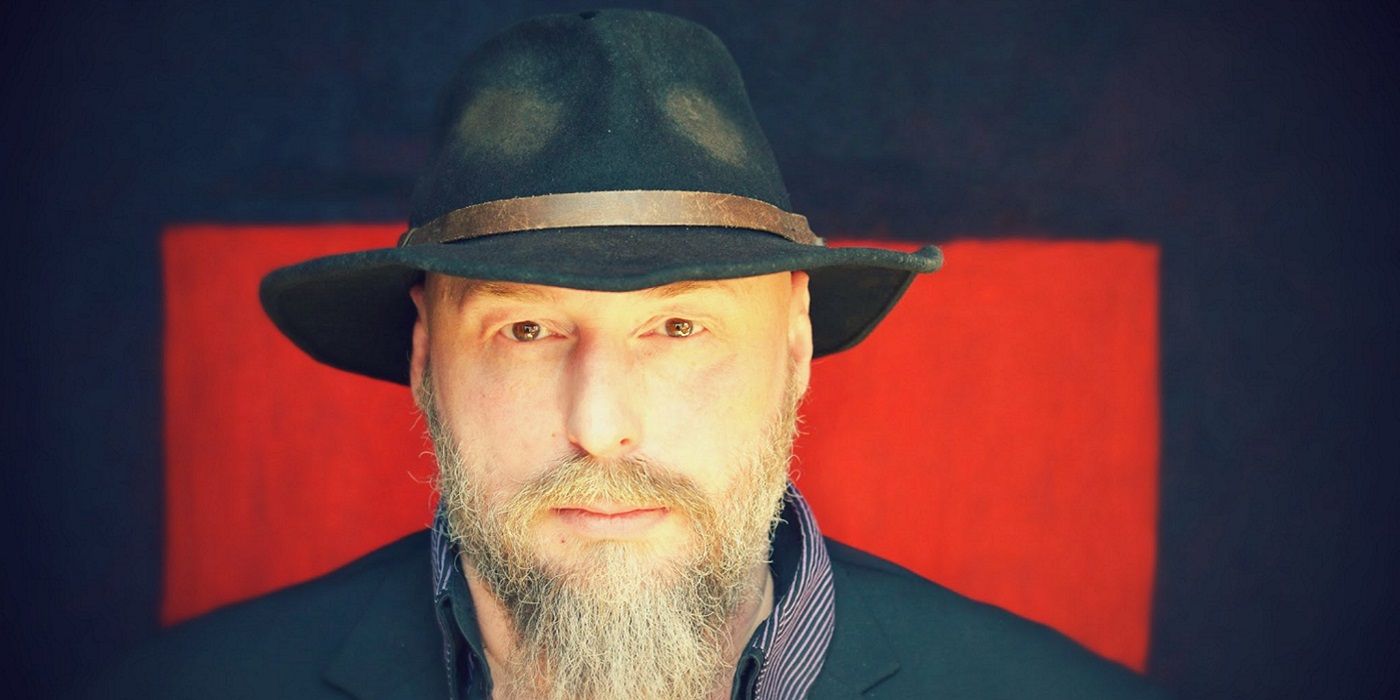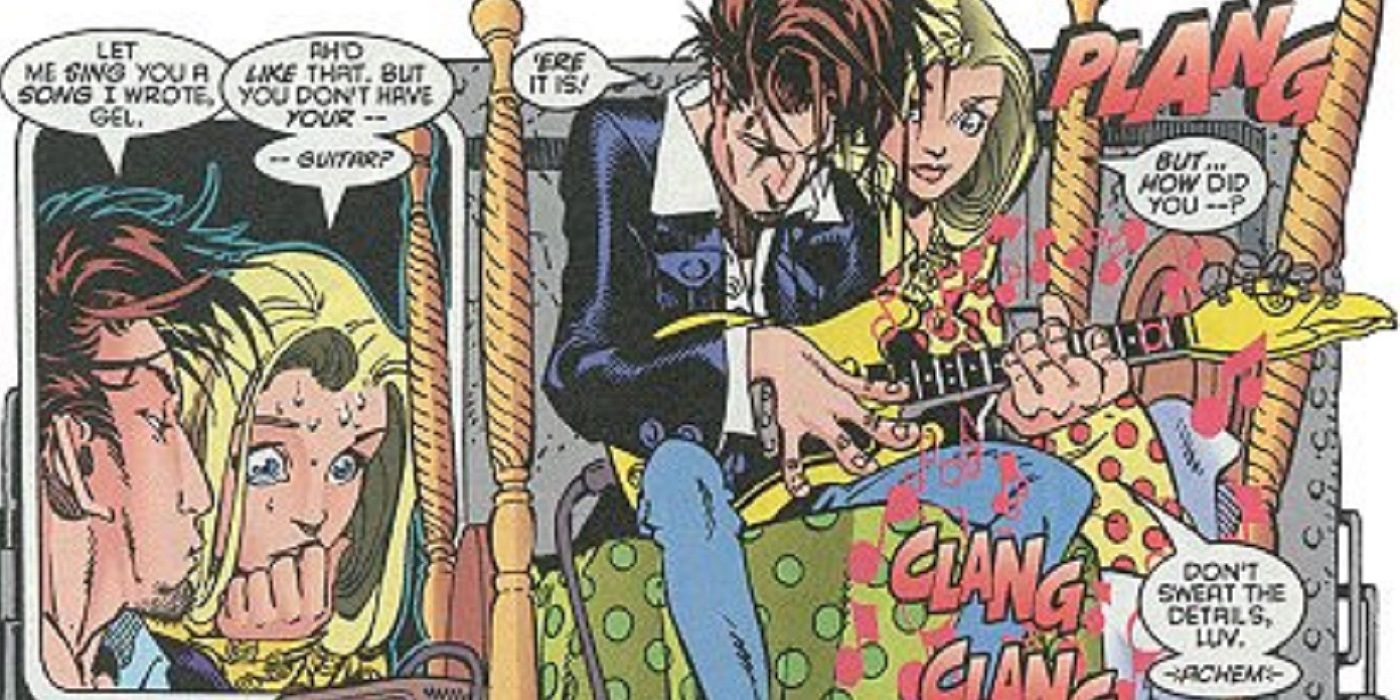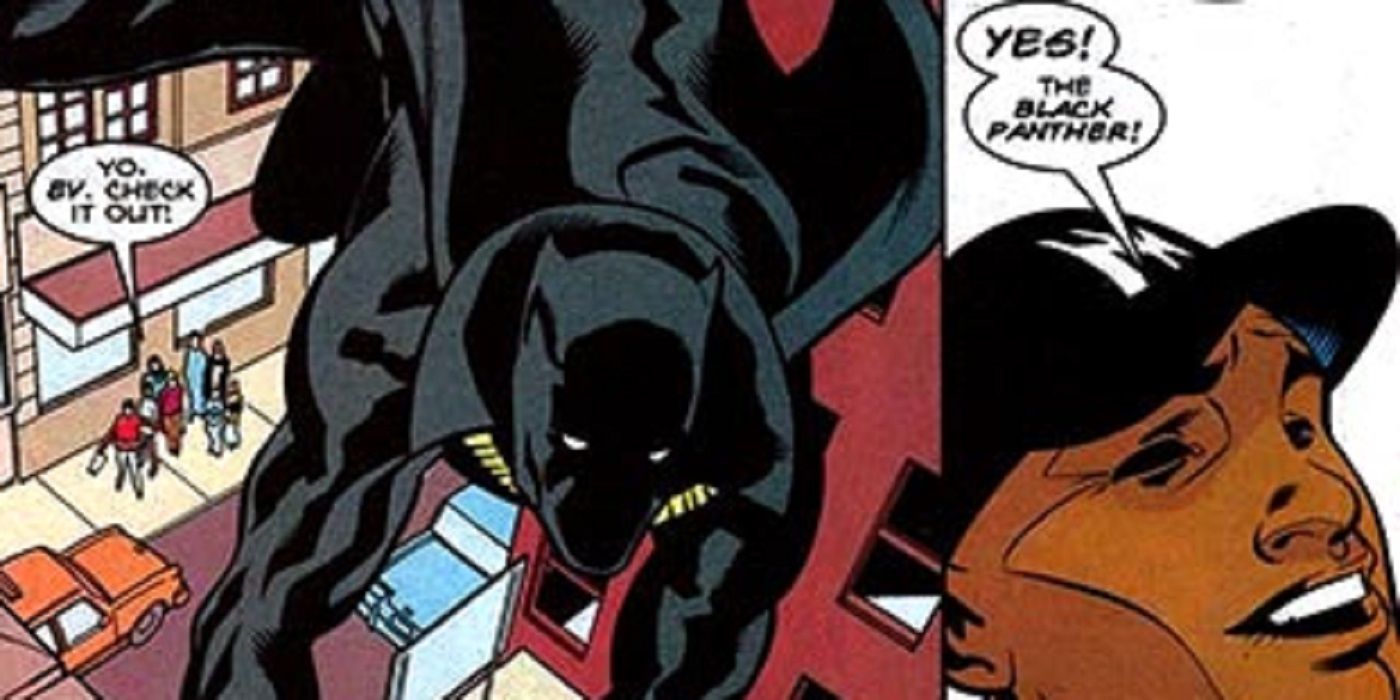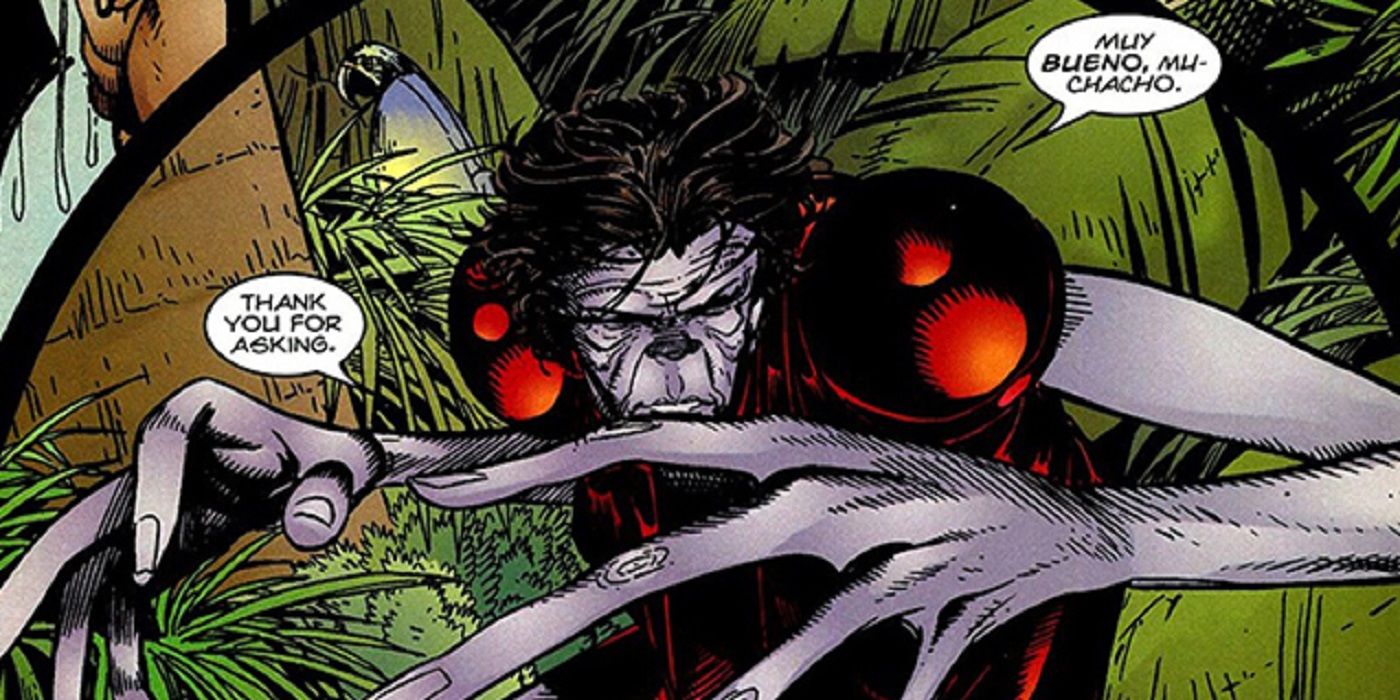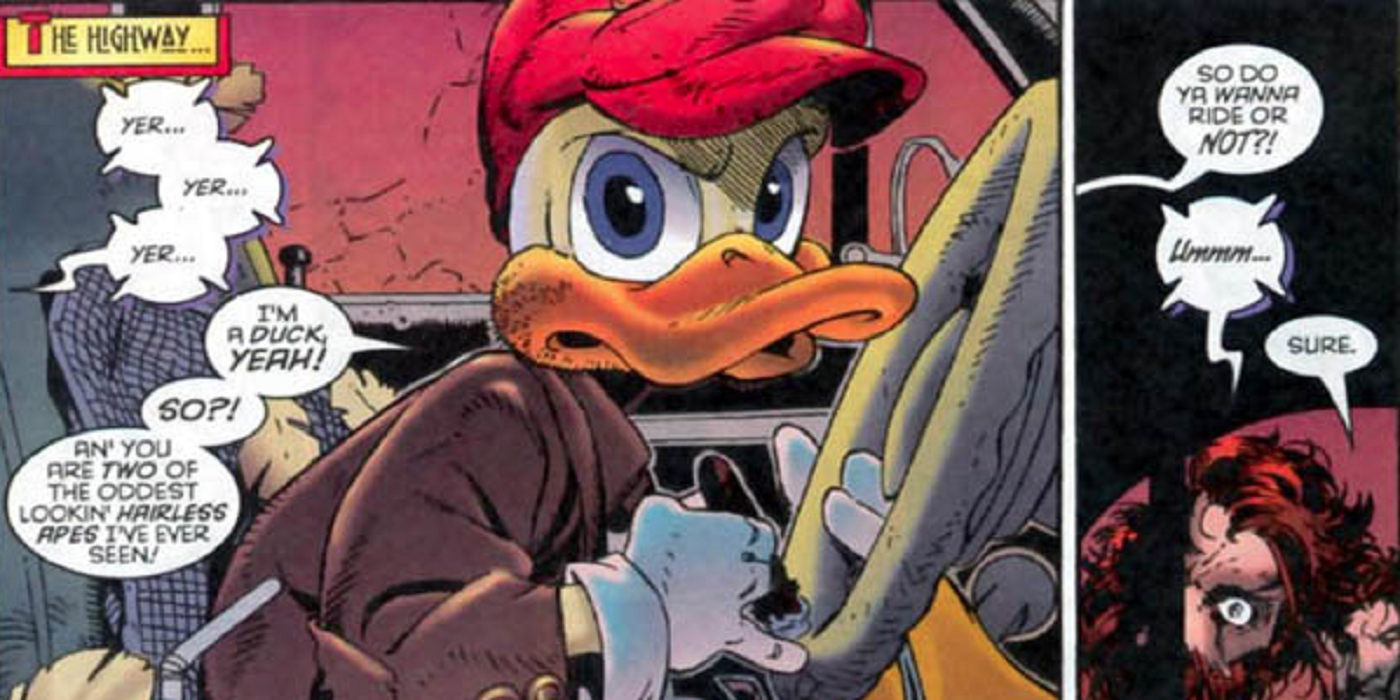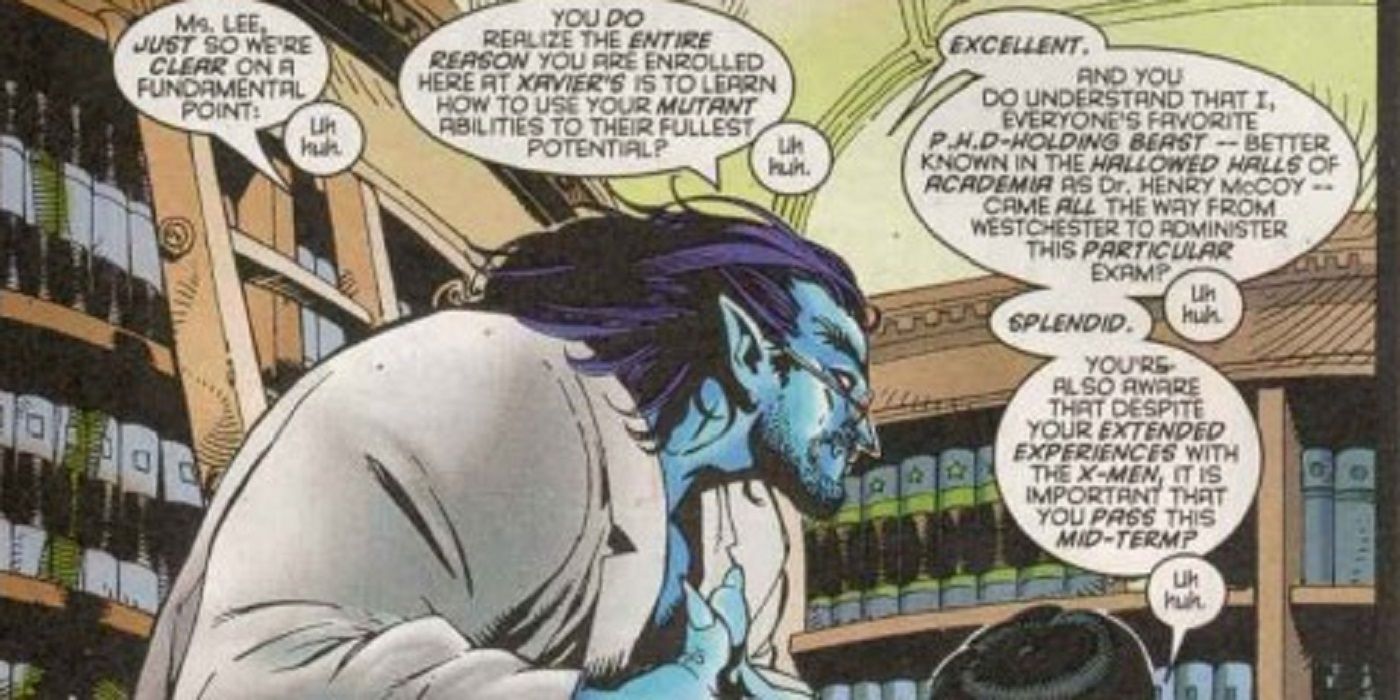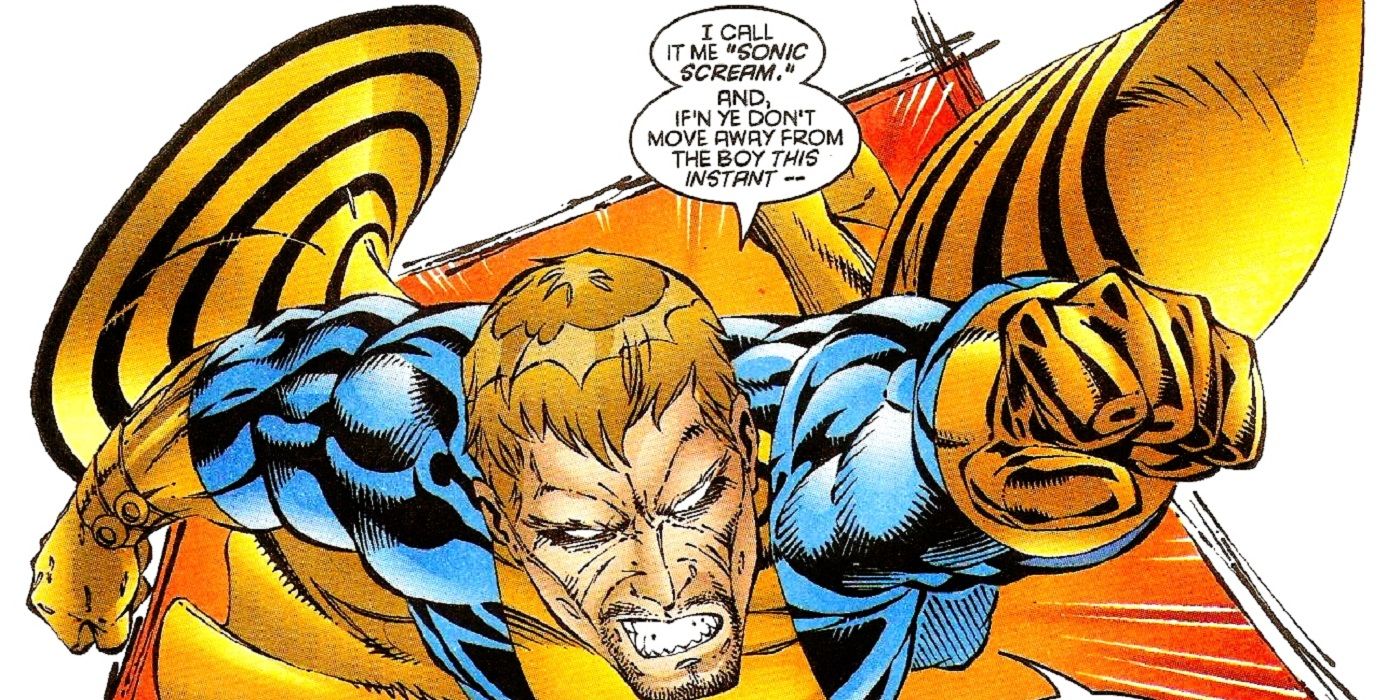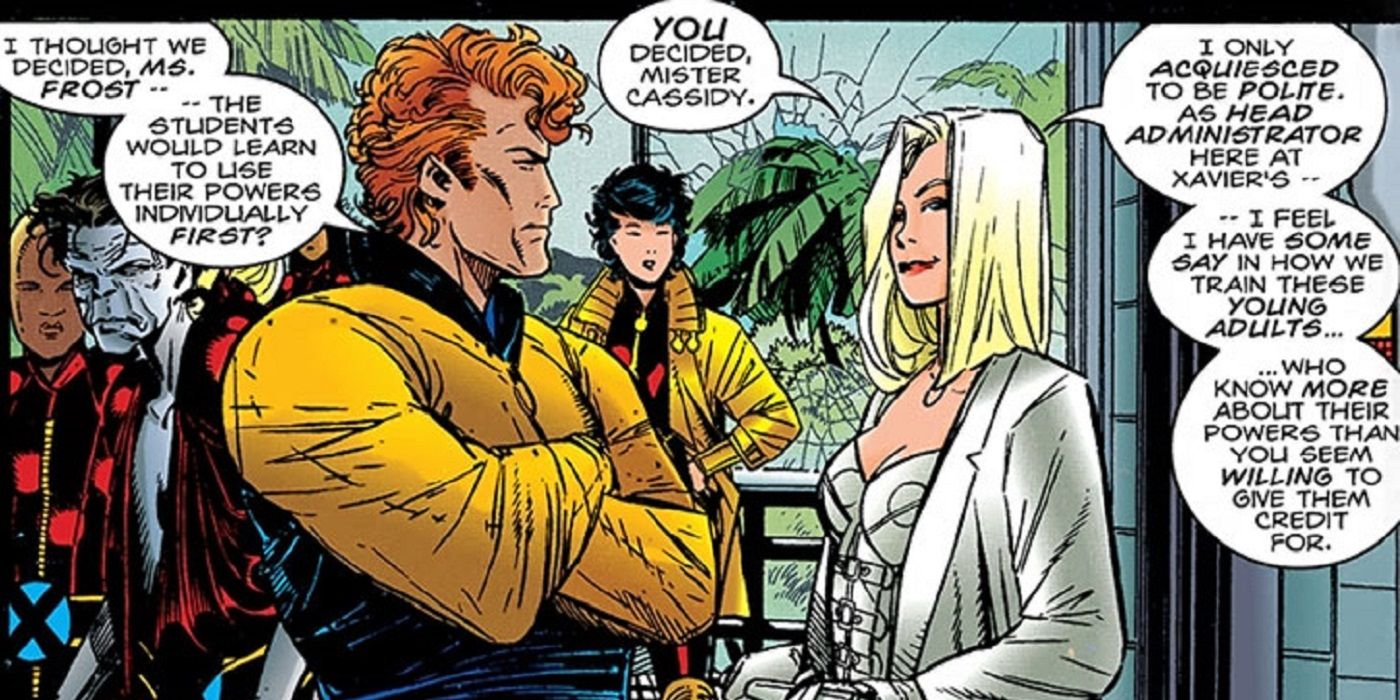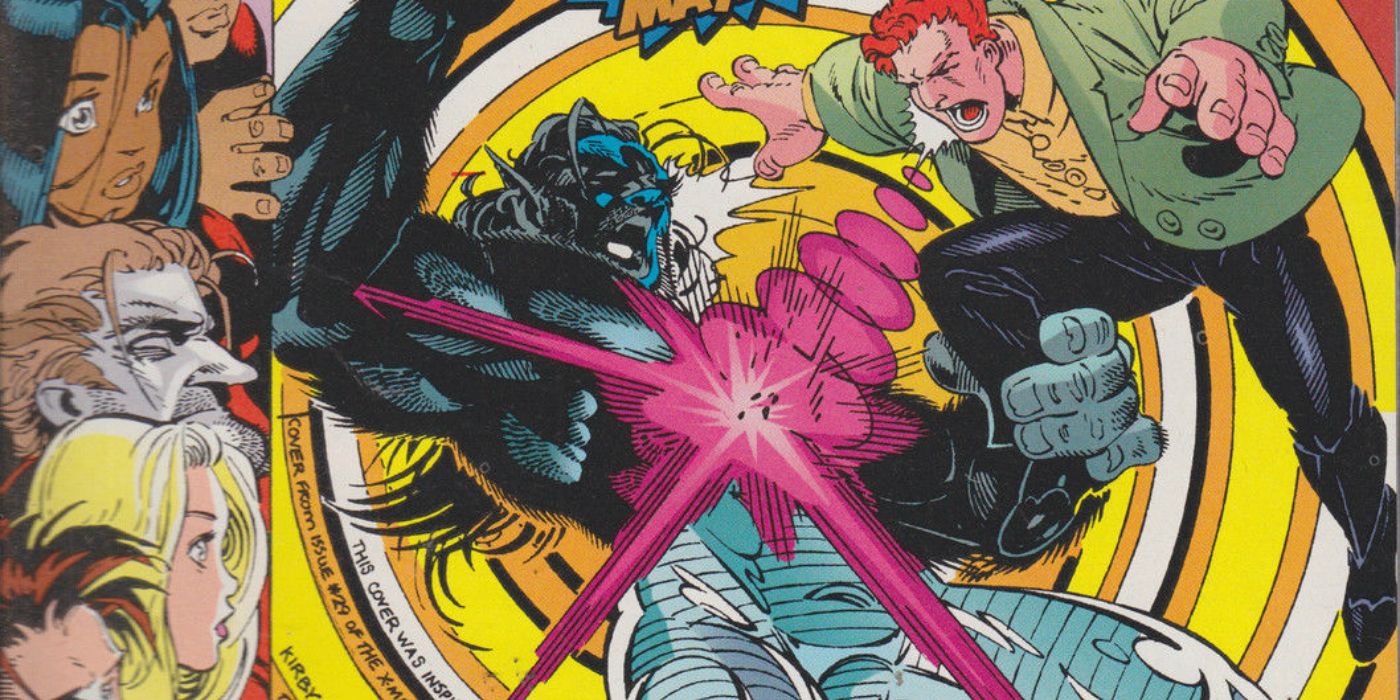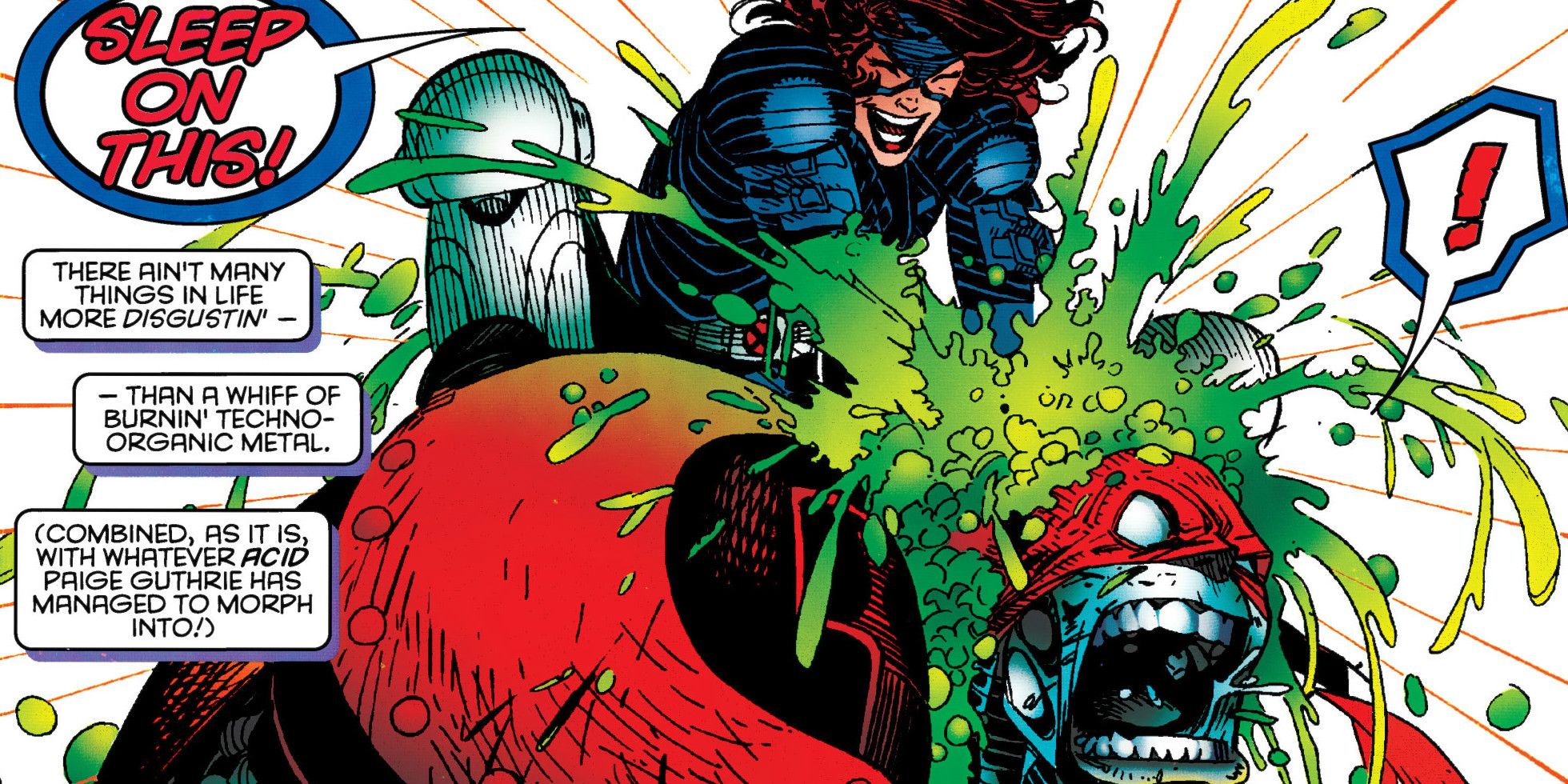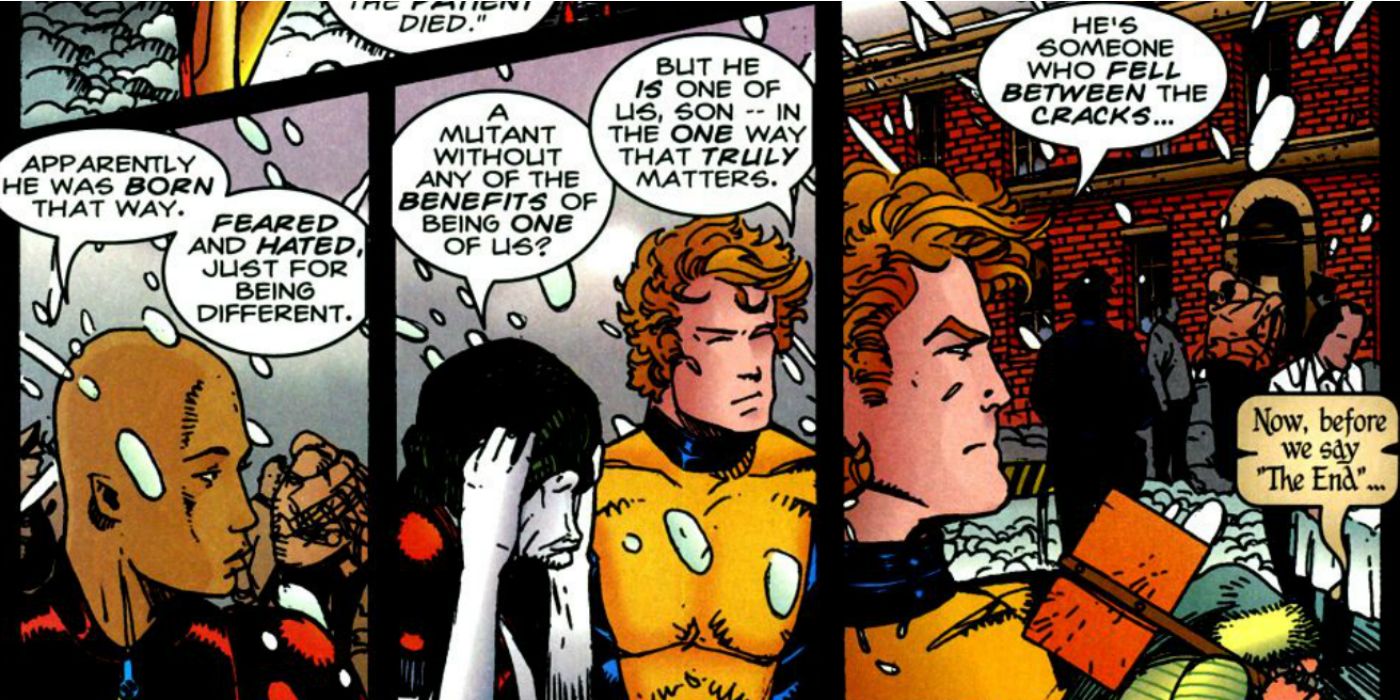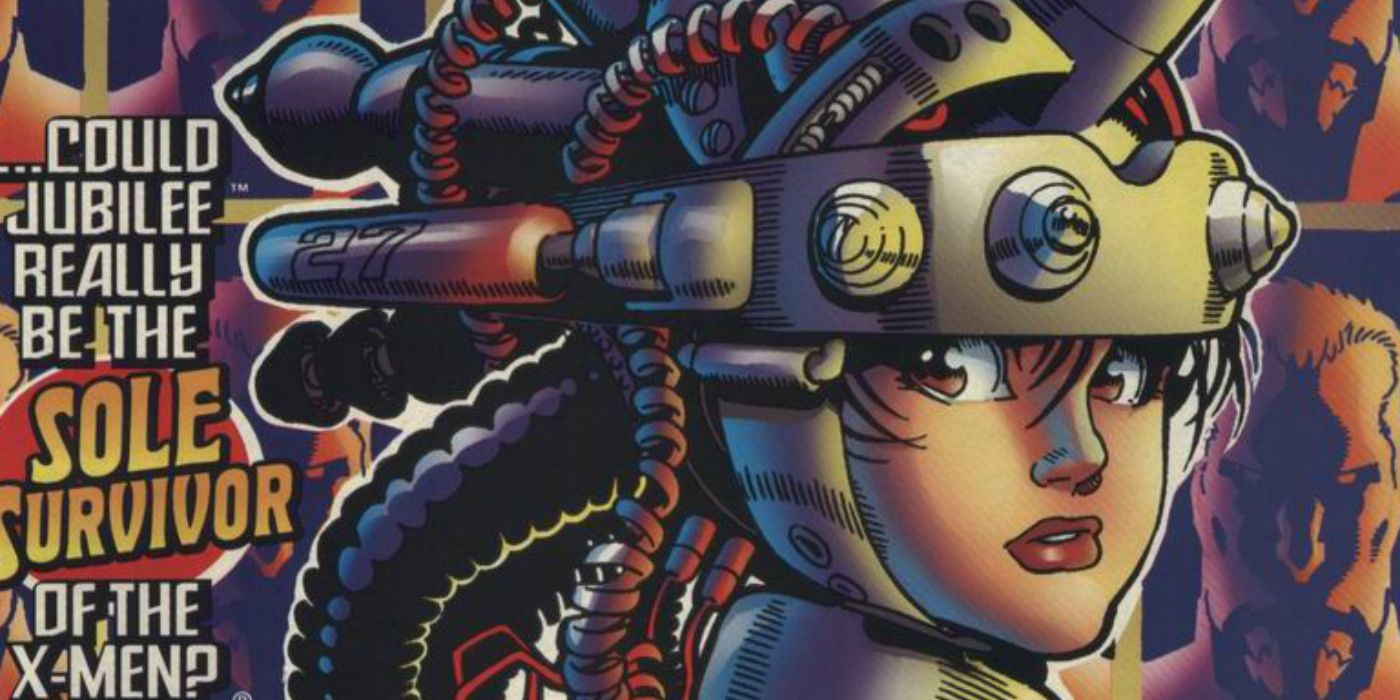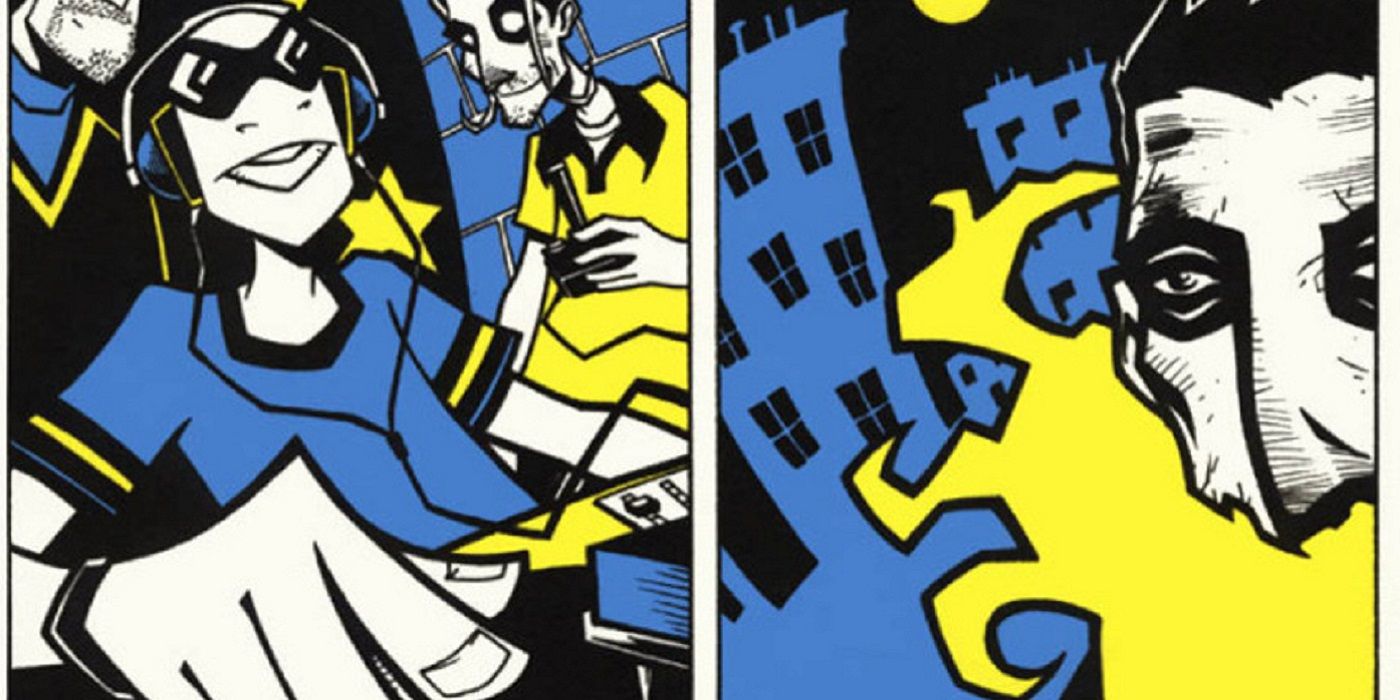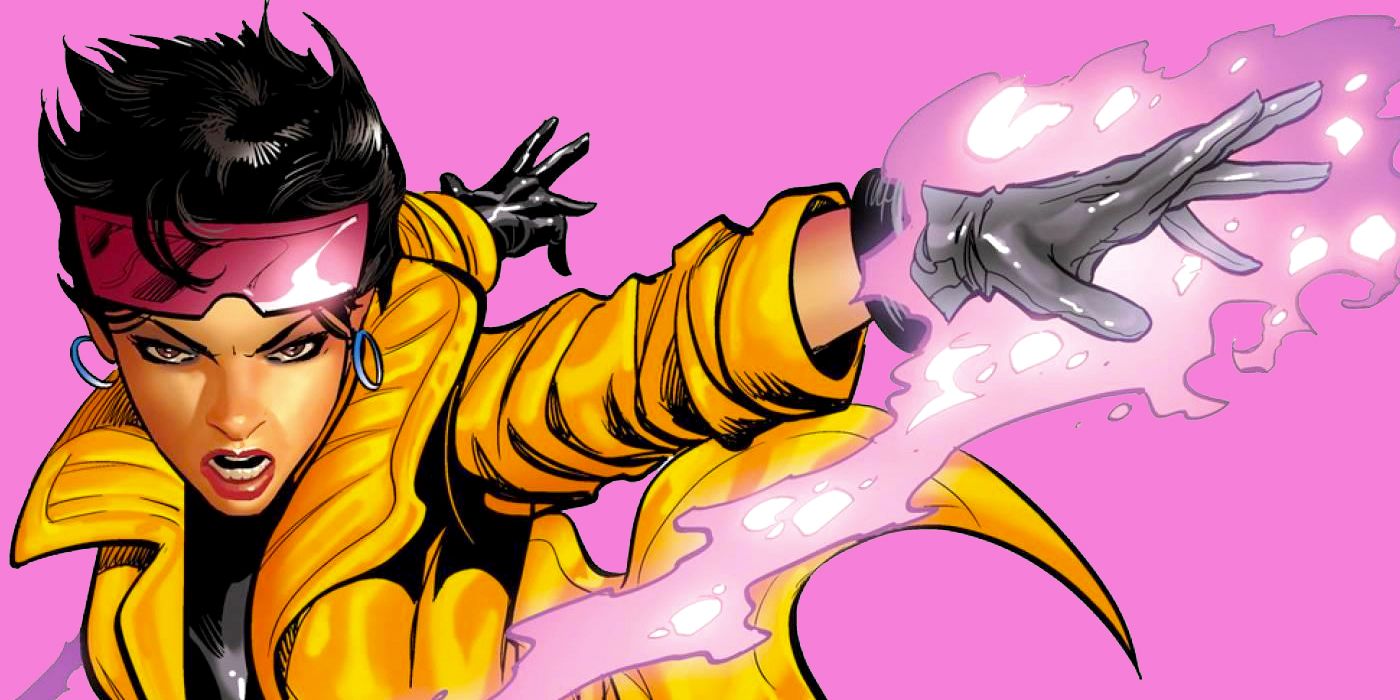Marvel’s recent announcement of a new “Generation X” series prompted a wave of nostalgia from ‘90s X-fans hopeful that it would feature the return of characters ill-served in recent years. Just the name is enough to conjure up memories of quirky stories, engaging characters and fantastic artwork, in the series introduced in 1994 by Scott Lobdell and Chris Bachalo. The Blue and Gold X-Men teams may have achieved the highest sales, and Cable and X-Force may feature the most gritted teeth and biggest guns, but the youngest generation of mutants were miles ahead of more established X-heroes when it came to the quality of their adventures.
RELATED: X-Men: The 15 Strongest Members Ever
Despite this, “Generation X” only lasted 75 issues before its cancellation in 2001. While Emma Frost has gone on to enjoy great prominence in the X-titles, the majority of the book’s cast have been ill-treated in the years since the Massachusetts Academy closed its doors. The upcoming return of the title is the perfect opportunity to correct this injustice, highlighting the reasons (in no specific order) why Generation X was the greatest X-book of the ‘90s.
15 It Used Old Concepts In New Ways
When “Generation X” was first launched in 1994, it was initially regarded with skepticism from some fans. The concept of "the next generation of the X-Men" had already been covered in “New Mutants,” so there was some doubt around how these new teens would differentiate themselves from their forbears. Such concern was misplaced. The teens of “Generation X” were another class of young mutants, it’s true, but a large part of the title’s appeal was that it took seemingly played-out concepts and characters and utilized them in interesting ways.
The title brought back Nanny and Orphan Maker in its fourth issue for a somber tale, their first appearance since “Uncanny X-Men” five years previously. Even more surprising was the return of Cassidy Keep, Banshee’s ancestral home, more than 15 years after it was first introduced in “Uncanny X-Men.” It would have been easy to gloss over this part of X-history, with its leprechauns and strangeness, but “Generation X” embraced it, adding dragons and fairies into the mix for a typically riotous romp.
14 It Used Creators From Outside The “Superhero Bubble”
A superhero comic using creators who have made their name elsewhere is hardly headline news anymore. The last decade has seen a succession of novelists, screenwriters and independent writers dipping their toes into the superhero world. As can be seen by the upcoming X-Men ResurrXion titles, such creators are increasingly getting marquee books for Marvel and DC. In the ‘90s, though, the situation was very different. Established names traded books between them, while Marvel editors often pulled double-duty as writers. Then along came “Generation X,” completely transforming the notion of what an X-Men comic should look like.
Chris Bachalo was known for his Vertigo work on “Shade the Changing Man” and “Death: The High cost of living.” His appearance on a mainstream superhero book was unexpected to say the least, but his realistic style, coupled with a quirky design flair, gave “Generation X” a very distinctive look. Later in the book’s run, both Warren Ellis and Brian Wood chronicled the teens’ adventures, and would return to the mutant titles on a number of occasions over the years.
13 Fresh Romantic Relationships
The majority of X-fans reading the titles during the ‘90s probably have a soft spot for Rogue and Gambit and their stop-start relationship. However, it’s true that even by the time that “Generation X” begun, many of the same story beats between the two had been hit over and over again. The same was true for Scott/Jean, Havok/Lorna and a number of other X-couples. While their relationships may have still entertained readers, they had lost the capacity to surprise.
That factor is what made the relationships in “Generation X” so successful. Not only was there the fun of discovering new pairings, but thanks to the wonder of teenage hormones, these characters actually had an excuse for all the crushes, awkward moments and looks of longing that would have seemed tiresome if associated with their older compatriots. Paige and Jono were the title’s Scott and Jean, their relationship fuelling much of the team's soap-opera drama. Not to be forgotten was the triangle between Everett, Jubilee and Monet, Everett remaining charmingly oblivious to Jubilee’s obvious crush on him.
12 Characters Acted Their Age
It wasn’t just in the area of romantic relationships that the Gen X crew acted their age. Chris Claremont is a legendary X-writer, and rightly so, but there’s no denying that his teens often came across as adults in their actions and speech patterns (*cough* Kitty Pryde *cough*). The teens of Generation X ranged from 13 ½ (Jubilee) to 18 (Chamber) at the beginning of the book, and they actually acted like it.
There’s so much that can be explored with teenage emotions, and the book took full advantage. As well as crushes and romance, there were battles over social position (M and Jubilee) and examples of teenage rebellion (like Husk getting drunk when she discovers about the legacy virus, or Skin’s smoking). And where would any self-respecting teenagers be without attendance at a High School prom and the ritual of toasting marshmallows at a camp fire? Of course, being teenagers, the actions of the characters were sometimes horribly misjudged, leaving the reader shouting at the page in frustration, but this just shows how well they were portrayed as teenagers who happened to be mutants rather than mutants who were meant to be in their teens.
11 It Didn’t Shy Away From The Downside Of Mutant Powers
Every X-fan knows that mutations can be a genetic lottery. For every power that allows you to pass yourself off as a “normal” person (Iceman, Jean Grey), there are others that make fitting-in with the crowd a daunting prospect (Blob, Nightcrawler). For the most part, the X-books tended to stick close to the mold of conventionally handsome heroes. With the exception of Strong Guy, most characters with physical mutations, including Nightcrawler and Archangel, were still portrayed as handsome. “Generation X” was less kind to its protagonists. In the forms of Penance, Chamber, and Skin, almost half the team had mutations that came at a great physical cost.
Penance had razor sharp skin that meant that a person could barely touch her without slashing their hands to ribbons (as Banshee found out, to his cost). Skin had to live with several feet of extra skin and a pallid gray color, while the manifestation of Chamber’s powers had blown away his chest and lower face. Every teen at some point feels like they don’t fit in. For these characters, their powers offered a reminder of that fact every single day.
10 It Utilized The Wider Marvel Universe
“Generation X” was always plugged into the main X-line, but one of the reasons it worked so well is that it also retained links with the rest of the Marvel universe. In the years since M day, the X-universe has grown increasingly insular and the example set by "Generation X" is a reminder of the benefits that come from retaining these wider links.
Most significantly, the book brought Howard the Duck back to prominence after a long absence from the Marvel universe, the character acting as Chamber and Skin’s chauffeur on a particularly strange road trip. Franklin Richards also came to stay with the team in the wake of his parents’ disappearance in “Onslaught,” forming a delightful friendship with Artie and Leech. The team even met up with the reformed “New Warriors,” having the traditional superhero misunderstanding/team-up. The greatest moment, though, was the kids' trip to NYC in #59. Artie and Leech used image inducers to cosplay as the Avengers and Synch scoured the city for a glimpse of his hero, the Black Panther. It was a reminder that these characters all live in the same world, their interactions helping to bring out new sides of familiar characters.
9 The School Setting Was Used To Great Effect
Any teen book focusing on superheroes, particularly one that has the concept of training the next generation, has to walk a rather fine line: namely, how to balance the learning element with the expected superhero slugfests. It’s a balance that “Generation X” struck well, with the school setting being an integral part of the book rather than a mere backdrop.
Part of the reason is character based: Emma Frost had long been portrayed as someone who considered herself a teacher and mentor to her students, and in Banshee she found a co-teacher who was equally convinced of the importance of learning. The ways in which the different students approached their studies, from the disinterest of Jubilee to the driven perfectionism of Husk, only added to the charm. X-Men regularly appeared as guest lecturers, a concept that was later replicated in "Avengers Academy," and the transformation of the Massachusetts Academy into a “normal” school during the Jay Farber run provided some great moments as the students interacted with regular kids. This setup had great potential and it seemed a missed opportunity when it was discarded by Warren Ellis during his Counter-X revamp.
8 It Brought Banshee Back To The Limelight
Sean Cassidy is a great character but for a long period after his departure from the X-Men he remained out of the limelight, occasionally popping up for guest appearances or brief stints on substitute X-teams. His actions during "The Phalanx Convent," where he was instrumental in saving the next generation of mutants, were a timely reminder of what a great character he was.
During his time in “Generation X,” readers were treated to the most thorough examination of Banshee to date. What came across was a man who cared deeply for the students in his care, yet was willing to be a drillmaster when required. There was a real sense that, through the Gen X kids, Sean was doing his best to be the kind of influence that he was never able to be for his own daughter, Siryn. Sean’s dynamic will-they-won't-they with Emma Frost was a big aspect during this time, the relationship between the two evolving over the series from animosity into something more. With Banshee recently returned to life as one of Apocalypse’s horsemen, hopefully he can find his way into the “Generation X” relaunch and make himself heard.
7 Emma Frost's Rehabilitation Began Here
Emma Frost has been ever-present in the X-titles ever since Grant Morrison brought her into the team in 2001. Her exposure has been so great that it’s somewhat surprising to think back and realize how little was known about her character when she gained a starring role in “Generation X.” She had been the evil White Queen of the Hellfire club and the manipulative teacher of the Hellions, but there was little depth to the character beyond these broadly sketched roles. “Generation X” changed all that.
From the onset, Emma brought a delicious snark to the team, making a nice contrast with the more straight-laced Banshee. Her teaching methods may have been unorthodox, but it was clear that she cared deeply for her students. She was a strong, confident woman, and was able to achieve this without showing the bare flesh that has been her trademark in recent years. The Warren Ellis/Brian Wood run portrayed Emma as a darker character, one who was capable of killing her own sister without remorse, but what all of her "Generation X" portrayals had in common was her unerring belief that she was best suited to guide the mutants of tomorrow.
6 It Inspired Flashback Month
In July 1997, Marvel’s regular titles all released -1 issues (meaning literally numbered as "negative one"), featuring new tales from characters’ past. The “Generation X” issue featured a young Emma Frost meeting with Dark Beast, while others explored characters’ childhoods or highlighted untold secrets of their origins. This was an intriguing concept, and one that was directly inspired by events in “Generation X.” The most memorable aspect was an incarnation of Stan Lee who introduced each comic, the popularity of which was due to "Generation X."
After 10 issues on “Generation X” (including a four issue stint on “Generation Next”), Chris Bachalo had taken a leave of absence from the title to work on a DC project. Artists including Roger Cruz and Tom Grummett did some good work during his absence, but the book lacked the distinctive tone that Bachalo’s pencils provided. So, when he returned with #17 in the summer of 1996, both he and Scott Lobdell had a point to prove. The resulting prequel featured an issue-long chase scene between Skin and the X-cutioner, stunning art, and a familiar narrator in the form of Stan Lee. Stan was actually drawn into the story, providing a running commentary on events, a concept so successful that it was replicated for Flashback month, where Stan introduced the majority of the tales.
5 Generation Next
“Age of Apocalypse” is one of the most inventive, ambitious and successful comic crossovers ever. Cancelling all the X-titles and replacing them with new books was a brave move by Marvel, but when it worked it paid off in spectacular fashion. The crossover had many high points but its defining moment was undoubtedly “Generation Next.”
While several team members were the same (Skin, Chamber, Husk and Mondo making up the core of the team), Banshee and Emma Frost were replaced as teachers by the unstable Colossus and the aggressive Shadowcat. The children were still at school, but a failing grade was likely to result in death rather than embarrassment. There was no prospect of a normal childhood in the AoA universe and it was clear that teachers and students alike were damaged in different ways. The task of rescuing Illyana Rasputin from the slave pits was a veritable suicide mission, with the vast majority of the students actually dying. As they fell one by one, there was a sense of finality that rarely comes from death in the Marvel universe. The mission may have been a success, but the cost was all too high.
4 Able To Tackle A Variety Of Stories
“Generation X” is something of a hard book to characterize. It’s about teen mutants, that’s a given, but the tone of the book could, and often did, change from issue to issue, sometimes even from scene to scene. For every ludicrous adventure in alternate dimensions or with shapeshifting rats, there was a hard-hitting story that packed an emotional punch. One famous instance was in #4, where the team attended a hostage situation at a local school. The perpetrator was believed to be a mutant, angry at not fitting in. Instead, he was revealed to be a disfigured human boy, although the results of his actions were no less tragic.
The ability to span the emotional spectrum is not only testament to the well-developed characters that made up the team, but also their status as teenagers. They could be stoic or silly, confident or full of self-doubt. Stuffed full of teenage angst and X-genes, readers never knew what to expect from the book's stars, apart from that it would invariably be entertaining.
3 Managed To Retain Its Own Identity Amidst Crossovers
Crossovers in the ‘90s were the bread and butter of the X-books. Like clockwork, it could be guaranteed that every few months a sprawling, multi-part crossover would come around once again, bringing increased sales and attention, but disrupting ongoing story threads. “Generation X” was no stranger to this during the duration of its run, but what was impressive is that for each time it was affected ("Age of Apocalypse," "Onslaught" and "Operation Zero Tolerance"), the story managed to advance its own plot lines and retain its own identity. Part of the reason is that the book wasn’t considered a “core” X-Men title, but a larger factor was the quality of the stories themselves.
The quality of “Generation Next” is well known, but the “Onslaught” and “Operation Zero Tolerance” tie-ins also used a mega-crossover as a way to focus on characterization. In the former, Emma’s concern over Onslaught caused her to kidnap her students, showing the depth of feeling she had for the children in her care. In the latter, the students had to survive away from the protection of their teachers, with Jubilee being kidnapped and having to confront the notion that she could be the last X-man.
2 The Generation X Underground Special
The kids of “Generation x” had many strange adventures during their time together. There were encounters with space dwarves, pookas and dragons, while the team even fought Dracula, long before Jubilee would be turned into a vampire. All of these pale in comparison to their strangest adventure of all: M, Jubilee, and Husk kicking butt in funktastic fashion as Banshee’s Angels.
The strip appeared in the “Generation X Underground Special,” a 1997 B+W comic by Jim Mahfood. In it, M and Skin played Space Invaders, Chamber journeyed to the big city and the team fought Jack Kerovac, Allen Ginsberg and William S. Burroughs in a parody of the old Hostess fruit pies adverts. The centerpiece of the issues, though, was “Banshee’s Angels.” With robotic super pimps, Bishop as Huggy Bear and the destructive power of raw funk, the strip was a funky thrill ride. The whole issue is a delightful curio, well worth tracking down; the only downside is that Marvel never published the sequel that this excellent comic deserved.
1 It Established Jubilee As More Than Just A ‘Kid Sidekick’
Jubilee is a character that, largely thanks to her starring role in the X-Men animated series, is perhaps better known to the general public than her profile in the comics would suggest. Before she made the move to “Generation X” she was very much the kid sidekick to the more experienced X-Men, another young girl that Wolverine had taken under his wing. Seeing Jubilee react to the madness of the X-Men’s world was always entertaining, but both as part of the wider X-team and in playing second-fiddle to Wolverine, she never really got the time to shine. Her move to “Generation X” changed that.
For a start, the move transformed Jubilee from the newbie into the experienced hero -- forever boring her teammates with tales about her days in the X-Men. She was still the same sarcastic loudmouth that readers had grown to love, but it was a refreshing change to see Jubilee feeling her way into a leadership role. For the first time in her X-Men career she was allowed to truly act her age and her character blossomed, lighting up the series whenever she appeared.
These are 15 of the reasons that "Generation X" was the best '90s X-book, but there are many more. Let us know what your reasons are in the comments!

